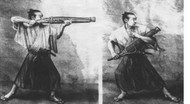Antique Firearms - History and Collectibility
Posted by Jim Olson on Aug 3rd 2022
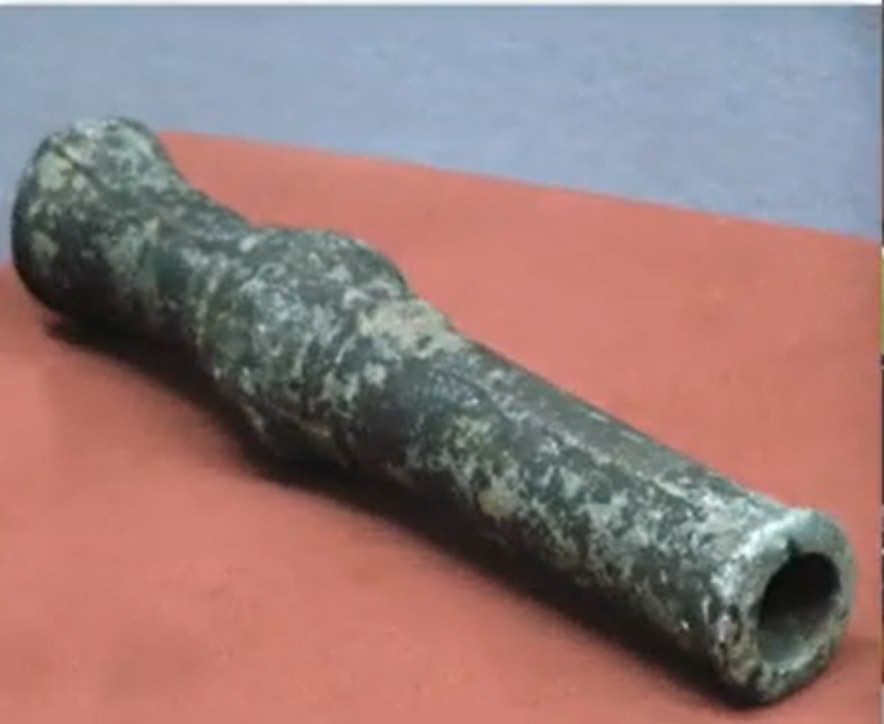
Introduction
Western Trading Post discusses the history of firearms and which ones are collectibles and which aren't.
What is an antique firearm?
By statute that came out in 1968, a firearm made in 1898 or before (with few exceptions), or a black powder replica, is considered an antique. Why is the cut-off 1898 some many ask? That is the date when most firearms switched from black powder to smokeless powder.
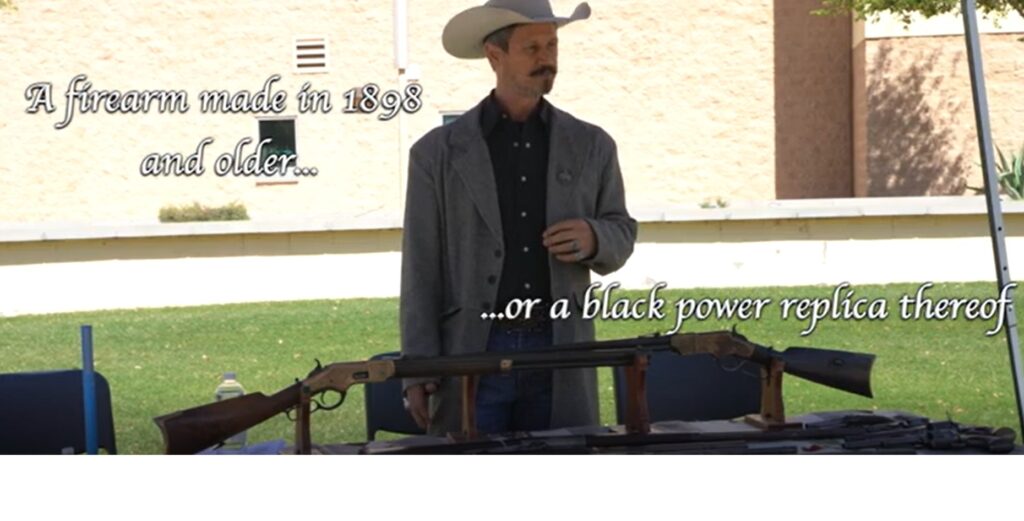
What is the difference between black powder and smokeless powder? The former, when fired, is more of an explosive. It explodes in all directions and makes a big puff of smoke. On the other hand, smokeless powder is a propellant. Therefore, it has much more force behind (and without the big puff of smoke).
And that's one of the main reasons why black powder guns are exempt from modern firearms laws. They do not pack as much force behind them as smokeless powder (modern) guns. Therefore, anything that shoots a modern smokeless powder bullet cannot be traded without going through the Federal Firearms Law (FFL) paperwork.
On the other hand, antique firearms do not need FFL transfer paperwork or background checks. Instead, they're considered more of a curio or a relic by the federal government. A "novelty" collected by collectors, but rarely used to commit a crime.
History of the firearm
It has been reported, “the oldest surviving firearm is the Heilongjiang ‘hand cannon’ dated to 1288, which was discovered at a site in modern-day China.” However, the accepted rule is that firearms were invented in the early 1300s. So, the antique period covers anything from about 1300 to 1898. That's around 600 years worth of items for antique firearms collectors to choose from, but they are not always that easy to come by.
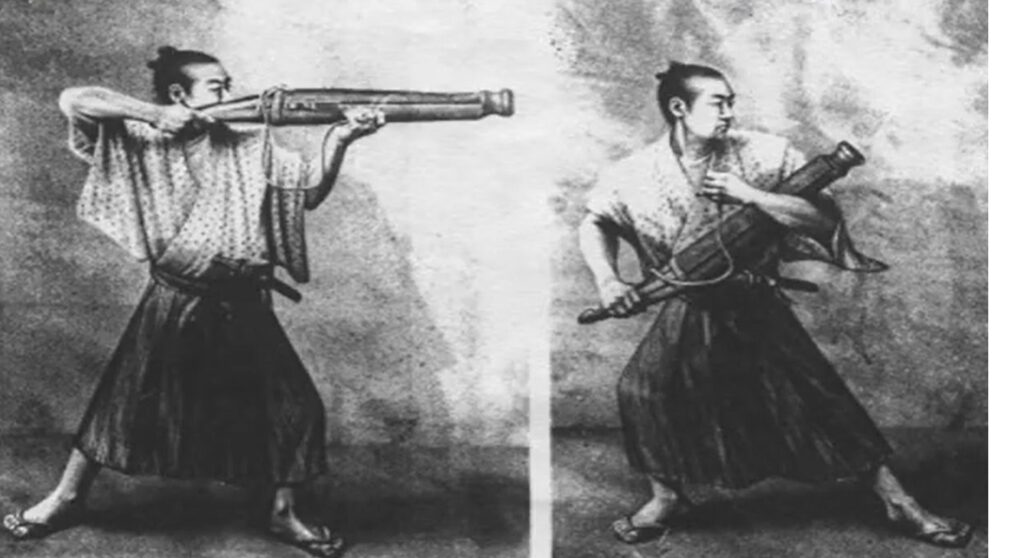
Improvements Along the way
In the beginning, “firearms” were fired by lighting a wick to spark the powder in the barrel. Loading and firing it was similar to how one would fire an antique cannon (hence the term “hand cannon”). One hand steadied it while the other lit the fuse. The operator had to brace the gun on something to fire it and accuracy was not great. Sometimes two men were used in an effort to improve accuracy.
The first major improvement in firearms came around 1400 when the matchlock was invented. The Portuguese are credited with this invention. With the matchlock, primer powder was now held in a "flash pan" and the lock held a slow burning wick in a clamp at the end of a small curved lever (the serpentine) which had to be lighted first by hand. When you pulled the trigger, the clamp dropped down, lowering the match into the flash pan, thus igniting the powder. The powder ignition in the flash pan went through a small touchhole, igniting the main charge of powder in the gun barrel and firing the weapon.

Now you could have two hands on your gun—you could light it and then aim. It was a great improvement!
The next significant improvement came in the early 1500s and was called a wheel-lock. But the wheel-lock was very complicated. It was invented in Germany, and those guys were into making clocks and high-tech stuff (for this time period). The wheel-lock generated a spark mechanically. The wheel-lock works by spinning a steel wheel against a piece of pyrite to generate spark (similar to a Zippo lighter). This ignited the gunpowder in the flash pan, which flashed through a small touchhole to ignite the main charge in the barrel.
With no match to lite, the wheel-lock was more reliable than the matchlock (especially on windy days). However, wheel-locks were expensive and complicated to produce, so matchlocks remained in common use for a number of years alongside the wheel-lock. Matchlocks and wheel-locks were produced side by side until the technology for producing the wheel-lock system became more affordable.
Meanwhile, about 1540 or so, they came out with a device called the Snap-Lock, and then in 1560 or so a Snap-Hance. But those were basically just minor improvements made to the wheel-lock system.
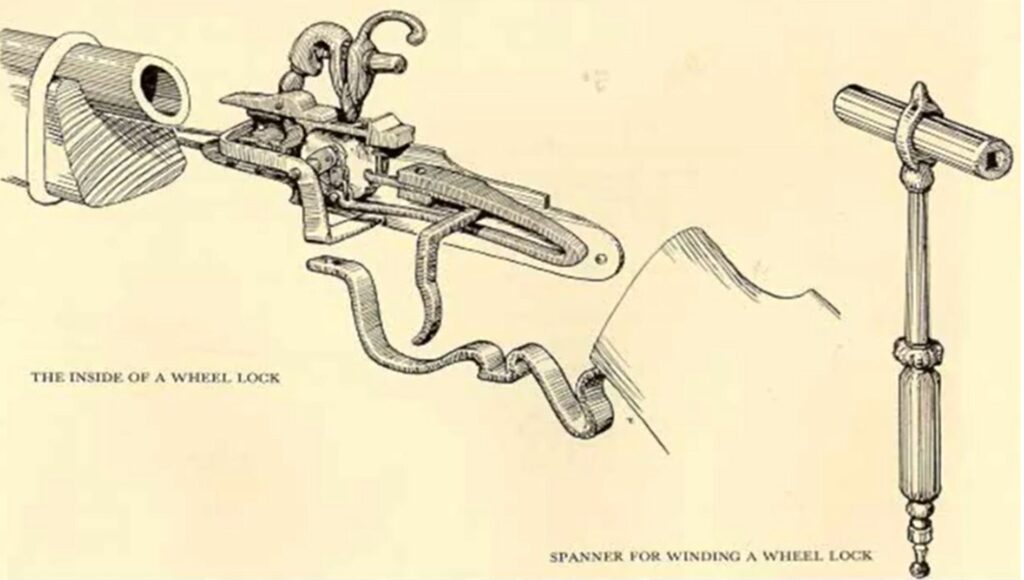
The next significant improvement for firearms was called a flintlock.
In the early 1600s, the flintlock was invented in France. It was an improvement over the other lock systems which had been in place for over a century. The flintlock mechanism had a piece of flint which is held between a set of jaws on the end of a short hammer. This hammer was pulled back into the "cocked" position. When released by the trigger, the spring-loaded hammer caused the flint to strike a piece of steel called the “frizzen." As the flint struck the frizzen, it created a spark which fell into the pan and ignited the powder. Flame burned through a small touchhole in the barrel and ignited the main powder charge, causing the weapon to fire. This greatly improved firearms as powder ignition was now even more reliable (and less susceptible to weather conditions).

Firearms of the 1800s
The Flintlock was king for about 200 years, from the 1600s till the early 1800s. Then in the early 1800s, the percussion system was invented. In this system, there was a little cap with some fulminate of mercury in one end, and it would fit over a nipple or cone at the back of the barrel. Then you cocked the hammer, and when you pulled the trigger, the hammer hit the little cap, making a tiny explosion that went through the hollow nipple into the back of the barrel, igniting the main charge of powder. It was a significant improvement. Now we're no longer relying on an external spark.
The weather became a lot less of a factor by this point. We had predominately percussion systems for the first 50 years or so of the 1800s.

Then, in the mid-1800s, they figured out how to combine the explosive material and the bullet. They come up with a metallic cartridge. The little mercury explosion from the percussion caps was now encapsulated in the back of a metal cartridge which was filled with powder, and the a lead ball was seated at the end of it. It was all in one for the first time!
Now the weather's not a factor at all. You can drop your cartridge in the river, pull it out, put it back in your gun, and fire it. It was a massive improvement over the other systems.

Then came some other major advances. While the metallic cartridge was being invented, people had also been working with the idea of multiple shots being available between reloading times. Around the 1840s, a guy in France invented what is known as a pepper box. With a pepper box, they would load from four to six barrels and whenever you fire it, the barrels would rotate around the firing pin—and some pepper boxes even had firing pins that revolved.

Then in 1852, a man named Roland White patented the idea of a revolving cylinder. With his invention, you pull the trigger back and the cylinder is cycling around the trigger. Now you just needed one barrel. The metallic cartridge and revolving cylinder changed firearms tremendously. About the mid-1800s, lever action rifles were also invented and now you could shoot multiple rounds from both pistols and rifles.
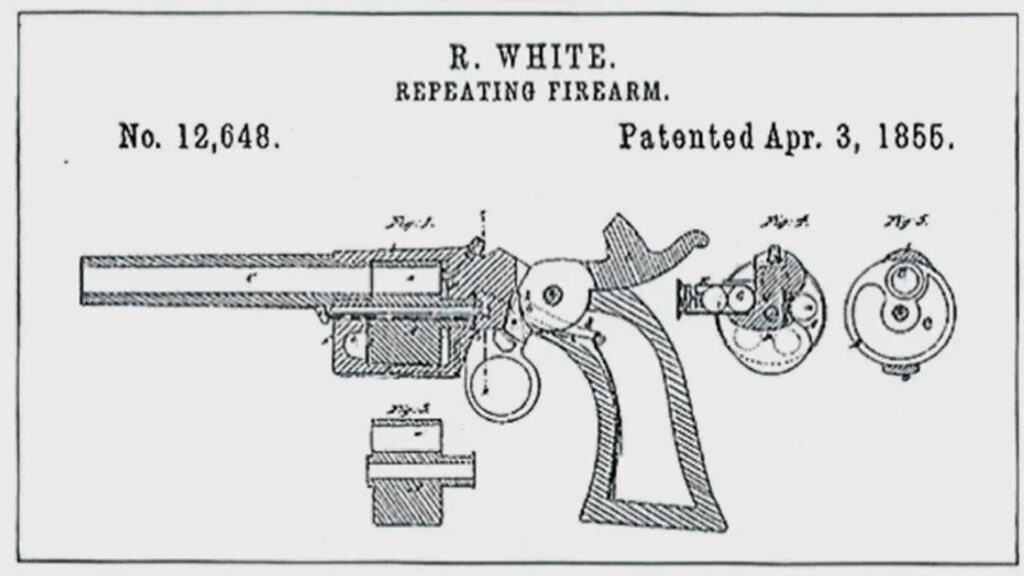
The 1800s was an exciting time for firearm innovations. The 1800s started out by using flintlocks and ended with the invention of semi-automatics using metallic cartridges. There were numerous inventions tried and produced during this era and firearms advanced more during this 100-year period than any other time, before or since. As the end of the century came about, smokeless powder was invented and this change, from black powder to smokeless in late 1890s, marked the end of the antique firearm era. Modern firearms have gotten lighter and quicker as time went by, but the same basic way they functioned by the 1890s is still in place today.
The Collectibility of Antique firearms
The most collected firearms from that time period are the Colt single action pistols and the lever action repeating Winchester rifles. That's what every basic collector starts with.
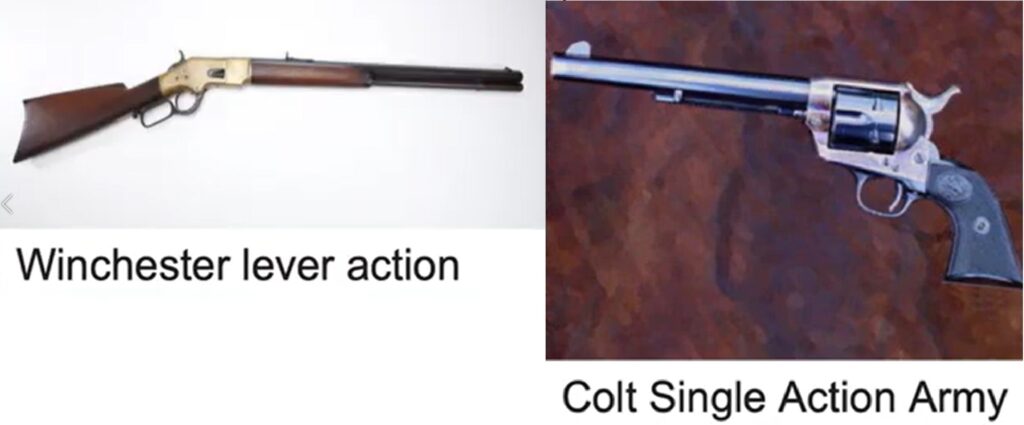
The lever action repeating rifle started with a Henry model that came out about 1860. The New Haven Arms Company made it. And from 1860 to 1866, there were about 14,000 of these made. And this was huge because the civil war was going on. There was an old saying - the southerners would talk about them. "Yankees who had a gun started firing on Monday and didn't quit till Sunday."
Wealthy people would buy one of these and send it to their relatives or whoever was fighting in the war. The US government ordered 1700 more or less of these for trial with their army. And all of those 1700 were inspected by the arms inspector for the union army.
The Yellowboy, the model 66S, made about 160,000 of those. They're relatively expensive, but you can find them. There are probably still a 100,000 of them out there somewhere, So they're rare, but not extremely rare.
Model 92 was used in Western movies, so it became popular. Chuck Connors was the first guy to do it. He had a model 92 with a big loop. They modified the lever that wasn't original to the gun because he had big hands.
John Wayne caught onto that real quick, and he wanted one too. So Chuck Connors and John Wayne used model 92s in their movies with that big loop though the period they were depicting might be from the 1870s or 1880s.

And Winchester came out with commemorative models of 92 with that big loop.
At the end of the antique period, Winchester came out with the model 94 - the most prolific Winchester ever. Anyone who grew up deer hunting with a .30-30 or had one of these in the gun rack in the back of their pickup probably had a model 94. It was the first model to use smokeless powder.
Around 7.5 million of these were produced from 1894 to 1900. They still produced them up till a few years ago. So these were very prolific guns. The interesting fact about model 94 is that the first 350,000 were made in what we consider the old west period, before the turn of the century. And therefore, the ones made after the turn of the century don't carry as much value as the first 350,000 that are considered a Curio or a Relic.
The Colt pistol is worth a minimum of $3,500; some people might want as much as $5,000. That's the range. So that's a lot of money for a Colt, that's all right. But, there are a lot of these guys who are good at taking parts from junk guns, which you can buy for almost nothing, assembling them all, and making it look like it's an original untouched gun. So you have to watch out for that because a junk gun is worth a few hundred bucks; something that's all intact is worth a few thousand.
If you want to get into collecting antique firearms, you don't have to break the bank. We're throwing some big numbers out here right now, but you can find things in the $1000 range, which are very collectible, and it's a good entry-level point. But always go to someone who will stand behind what they sell and knows what they're talking about.
Western Trading Post can help you to get into collecting antique firearms or increase your collection. Also, check out this article on the same subject.
Here are some helpful links to explore more – Award-winning TV show, YouTube channel, and app.

